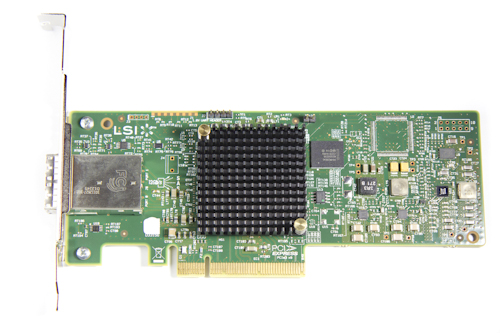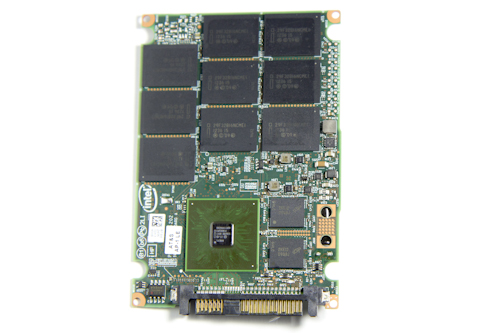LSI SAS 9300-8e & HGST Ultrastar SSD800MM: 12 Gb/s SAS, Tested
With the announcement of LSI's SAS 9300-8e and HGST's Ultrastar SSD800MM earlier this year, the world was officially introduced to 12 Gb/s SAS. Today we get our first look at how two times the interface bandwidth translates to real-world performance.
12 Gb/s SAS: An Impressive Demonstration Of Speed
When we saw our first 12 Gb/s SAS demo, the enthusiasts in us naturally got excited. Future-looking technology always seems to do that. But a lot changed around us since we sat in on those exhibitions. We now have entry-level client SSDs reading and writing 500 MB/s. Prices on solid-state storage continue falling, both for desktop power users and IT professionals. Really, only the drive interfaces remained constant.
The lack of change in that particular area is going to, well, change. Between SATA Express, SCSI Express, NVMe, SoP, and SFF-8639, everything from physical interfaces to protocols and connectors will be different. Through all of that, though, SAS will persist. A 12 Gb/s interface should give the standard plenty of room to scale, even as multiple PCIe-based protocols fight for acceptance.
LSI is going to help push the adoption of 12 Gb/s SAS with the introduction of its SAS 9300-8e. We don't yet know how much more it's going to cost, but we have to imagine there will be a premium beyond what you pay for today's 6 Gb/s HBAs. Then again, compared to the number of ports it'd take to match the performance of eight 12 Gb/s interfaces, we see plenty of room for next-gen SAS to become a value play, too. If that turns out to be true, there's very little reason not to take the plunge when you're in the market for your next HBA. Future-proofing is just smart, even if there aren't more 12 Gb/s-capable drives and backplanes just yet.
On our bench, the SAS 9300-8e performed well in both 6 and 12 Gb/s modes. It certainly doesn't seem to be bottlenecking the one 12 Gb/s SSD to which we have access, and it's nearly as fast as Intel's native SATA controller when we attach the company's SSD DC S3700, too.
But LSI's controller is an enabler. Really, the star of this show turns out to be HGST's SSD800MM. Sequential reads topped 150,000 IOPS and 1 GB/s. Naturally, it blew past every 2.5" SSD we've ever reviewed, enterprise and client alike. Its performance, in many cases, comes closer to the PCI Express-based cards we've tested. Although write performance didn't come close to the read numbers, it still landed 30 to 50% higher than the fastest 6 Gb/s SSDs. Much of that comes from a 12-channel controller co-developed by Intel and tons of over-provisioning. When you combine those variables and add in high-endurance MLC NAND, you end up with a product that excels in almost every category that a good enterprise-oriented product needs to cover.
We were particularly impressed with the performance of the SSD800MM at 6 Gb/s. Normally, when you have a big technology breakthrough, the first prototype products aren't very well-optimized. The fact that the SSD800MM does so well at a lower interface transfer rate makes it an intriguing offering, even in businesses that don't have 12 Gb/s SAS equipment yet. Of course, price plays a bit part in our interest. As of now, HGST isn't willing to comment, so we can't give this drive a blessing just yet.
Hopefully, both of these products are indicative of what we'll see 12 Gb/s SAS do in the next few years. Right out of the gate, we're off to a pretty fantastic start.
Get Tom's Hardware's best news and in-depth reviews, straight to your inbox.
Current page: 12 Gb/s SAS: An Impressive Demonstration Of Speed
Prev Page Results: Enterprise Video Streaming Performance-
major-error The performance and relative maturity of this prototype drive certainly is impressive, but this is what the enterprise space demands.Reply
At the consumer level though, the article takes on a completely different tone--I would be very surprised if we don't start seeing mention of PCIe4 at/before the top of the next CPU cycle (so, in 24-36 months at most.) -
raidtarded Actually, Adaptec already saturated PCIe 3.0 with 6GB/s. The chart is incorrect, it doesn't take 12Gb/s to saturate the PCIe bus. Well, not for Adaptec.Reply -
falcompsx Remember when mechanical hard drives struggled to saturate their interfaces? Times sure have changed with SSD tech.Reply -
CaedenV Reply11006286 said:The performance and relative maturity of this prototype drive certainly is impressive, but this is what the enterprise space demands.
At the consumer level though, the article takes on a completely different tone--I would be very surprised if we don't start seeing mention of PCIe4 at/before the top of the next CPU cycle (so, in 24-36 months at most.)
Ya, my bet is that we will not start to see SATA4 or PCIe4 until Skymont at the earliest. Considering it is looking like Broadwell may be pushed back due to 14nm die shrink issues I would bet that Skymont will have similar issues when moving to 10nm. But at least for home users you can cram 2 SSDs in RAID0 with a proper RAID card and get a little performance boost until then. I guess the only problem is that most people are going to use the onboard Intel RAID for RAID0, which will get you a killer synthetic benchmark, but in practical reality it is really just expanding your volume with very little speed benefit. -
bit_user * wipes drool off floor *Reply
That's a quality review of some quality products. I like the insights shared, throughout. I especially appreciated the link to the SATA-Express paper. Thanks!
MORE REVIEWS LIKE THIS!!
:) -
bit_user Reply
How many ports and how many lanes, though? If it's just a 8-port card, the math doesn't support that, as 6x8 = 48 Gbps, which is less than the 8 x 8 = 64 Gbps that a x8 PCIe 3.0 slot should carry.11006482 said:Actually, Adaptec already saturated PCIe 3.0 with 6GB/s. The chart is incorrect, it doesn't take 12Gb/s to saturate the PCIe bus. Well, not for Adaptec.
-
raidtarded It is the equivalent of a nuke bomb compared to the LSI products. It has 24 Native ports.Reply11011736 said:
How many ports and how many lanes, though? If it's just a 8-port card, the math doesn't support that, as 6x8 = 48 Gbps, which is less than the 8 x 8 = 64 Gbps that a x8 PCIe 3.0 slot should carry.11006482 said:Actually, Adaptec already saturated PCIe 3.0 with 6GB/s. The chart is incorrect, it doesn't take 12Gb/s to saturate the PCIe bus. Well, not for Adaptec.

